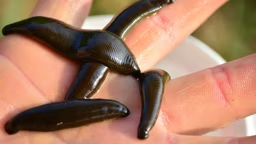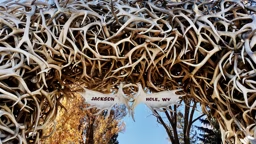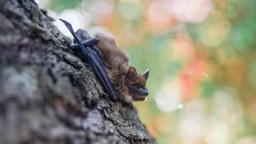
Seeds
The simplest and best way to draw a variety of birds to your backyard is with sunflower seed, which comes in two basic types, striped and black-oil. The striped variety is a bit larger in size and is easily handled by larger birds such as cardinals, jays, and grosbeaks. The smaller black-oil variety is easier to eat for birds such as chickadees, titmice, and nuthatches.
Other seeds of importance to birds are two types of proso millet (red and white), safflower seed, milo, and corn. Usually purchased as mixes with sunflower seed, these seeds should make up the lion's share of a mix for the most benefit to the birds. Millet and milo are eaten readily by ground-feeding species such as doves, sparrows, and juncos, while corn is favored by jays, doves, quail, and pheasants. A favorite of finches, small black nyjer seed (until recently called "niger" or "thistle" seed), is also popular.
See also Managing Bird Nests at the Cabin
Suet Cakes
To win over a bird's heart, say it with suet. For attracting woodpeckers, titmice, chickadees, and nuthatches, suet is hard to beat. For many years the standard approach was to offer a chunk of beef suet suspended in a plastic mesh bag. Now, suet cakes made from rendered suet are widely available, meaning no more spoilage in warm weather. These inexpensive and convenient cakes are usually offered in handy plastic-coated wire-mesh cages that have hinged tops for easy filling.
Special Treats
Other foods that have grown in popularity over the years are oranges, peanut butter, and mealworms. Orioles, finches, tanagers, and even woodpeckers have a fondness for oranges. Halve an orange and impale it on a large finishing nail that is hammered into a tree, stump, or board. Peanut butter can be mixed with cornmeal (to make it less sticky) or spooned out as is and smeared onto tree bark. Woodpeckers, nuthatches, and creepers find peanut butter a tasty treat. Mealworms - those hard, yellow beetle larvae often used for fish bait - can be set out in a shallow dish on your deck or patio table for mockingbirds, robins, bluebirds, and titmice.
See also Attract More Birds
Feeders
Three basic feeder types have proved their reliability over the years. The hopper-style feeder consists of two glass sides held in a wooden or metal frame with a removable top to load seeds. The seeds run out from under the glass onto a platform that is bordered by a lip for hungry birds to perch on. Hopper feeders are usually mounted on the top of a metal pole or wooden post.
The platform feeder is very simple - a platform of variable size supported by short posts or set directly on a stump or deck railing, often with a screen bottom for drainage and a roof to help keep the seed dry.
The tube feeder comes in many styles, but the basic model consists of a clear plastic cylinder with several tiers of small portholes to dispense seed. More expensive varieties have metal ports to deter squirrels. The feeding ports can be larger to dispense sunflower seed or smaller for nyjer seed.
Article courtesy of Birder's World magazine.










